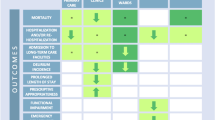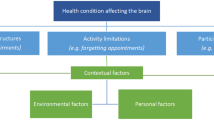Abstract
Objectives
To systematically assess the prevalence of decreased intrinsic capacity in older adults, stratified by relevant factors such as country, sex, sample source, and region.
Methods
We conducted a comprehensive search of PubMed, Web of Science, EMBASE, The Cochrane Library, PsychINFO, CINAHL, China Knowledge Resource Integrated Database, Wanfang Database, Weipu Database, and Chinese Biomedical Database to collect studies published on the decline of intrinsic capacity in older adults before February 24, 2023. The results of the study were analyzed using the Stata 15.0 software package, using a random-effects model to estimate the pooled detection rate of decreased intrinsic capacity in older adults. The Joanna Briggs Institute Critical Appraisal Tool was used to assess the quality of all included studies.
Results
A total of 16 studies (67,881 older adults in 4 countries) were included. The results showed that the pooled detection rate of decreased intrinsic capacity in older adults was 76.1% (95% CI: 68.0%–84.2%). The 16 studies had obvious heterogeneity, and further subgroup analysis showed that the detection rate of decreased intrinsic capacity in older adults was higher in developed countries, females, and hospitals. Thirteen studies found that the pooled detection rate was 73.7% (95%: CI 64.5%–82.8%) for decreased intrinsic capacity in Chinese older adults, with higher rates in mainland China and Hong Kong than in Taiwan.
Conclusions
Our study suggests that intrinsic capacity declines more rapidly in older adults. Understanding the degree of decline in the intrinsic capacity of older adults will help to provide an important basis for the formulation and development of care policies for older adults.
Trial registration number
PROSPERO (CRD42023402680).



Similar content being viewed by others
Data availability
The data that support the findings of this study are available from the corresponding author upon reasonable request.
References
Beard JR, Officer A, de Carvalho IA et al (2016) The world report on ageing and health: a policy framework for healthy ageing. Lancet 387:2145–2154. https://doi.org/10.1016/s0140-6736(15)00516-4
Ashikali EM, Ludwig C, Mastromauro L et al (2023) Intrinsic capacities, functional ability, physiological systems, and caregiver support: a targeted synthesis of effective interventions and international recommendations for older adults. Int J Environ Res Public Health. https://doi.org/10.3390/ijerph20054382
Rubinstein B (1972) Characteristics of hook formation by bean seedlings. Plant Physio 49:640–643. https://doi.org/10.1104/pp.49.4.640
Shine J, Dalgarno L (1975) Determinant of cistron specificity in bacterial ribosomes. Nature 254:34–38. https://doi.org/10.1038/254034a0
World Health Organization (2015) World report on ageing and health 2015
Cesari M, Araujo de Carvalho I, Amuthavalli Thiyagarajan J et al (2018) Evidence for the domains supporting the construct of intrinsic capacity. J Gerontol A Biol Sci Med Sci 73:1653–1660. https://doi.org/10.1093/gerona/gly011
Belloni G, Cesari M (2019) Frailty and intrinsic capacity: two distinct but related constructs. Front Med (Lausanne) 6:133. https://doi.org/10.3389/fmed.2019.00133
Waris M, Upadhyay AD, Chatterjee P et al (2022) Establishment of clinical construct of intrinsic capacity in older adults and its prediction of functional decline. Clin Interv Aging 17:1569–1580. https://doi.org/10.2147/cia.S371793
Chew J, Lim JP, Yew S et al (2021) Disentangling the relationship between frailty and intrinsic capacity in healthy community-dwelling older adults: a cluster analysis. J Nutr Health Aging 25:1112–1118. https://doi.org/10.1007/s12603-021-1679-2
González-Bautista E, de Souto Barreto P, Andrieu S et al (2021) Screening for intrinsic capacity impairments as markers of increased risk of frailty and disability in the context of integrated care for older people: secondary analysis of MAPT. Maturitas 150:1–6. https://doi.org/10.1016/j.maturitas.2021.05.011
Astrone P, Perracini MR, Martin FC et al (2022) The potential of assessment based on the WHO framework of intrinsic capacity in fragility fracture prevention. Aging Clin Exp Res 34:2635–2643. https://doi.org/10.1007/s40520-022-02186-w
Huang CH, Okada K, Matsushita E et al (2021) The association of social frailty with intrinsic capacity in community-dwelling older adults: a prospective cohort study. BMC Geriatr 21:515. https://doi.org/10.1186/s12877-021-02466-6
Stolz E, Mayerl H, Freidl W et al (2022) Intrinsic capacity predicts negative health outcomes in older adults. J Gerontol A Biol Sci Med Sci 77:101–105. https://doi.org/10.1093/gerona/glab279
Charles A, Buckinx F, Locquet M et al (2020) Prediction of adverse outcomes in nursing home residents according to intrinsic capacity proposed by the world health organization. J Gerontol A Biol Sci Med Sci 5:1594–1599. https://doi.org/10.1093/gerona/glz218
Sánchez-Sánchez JL, Rolland Y, Cesari M et al (2022) Associations between intrinsic capacity and adverse events among nursing home residents: the INCUR study. J Am Med Dir Assoc 23:872-876.e4. https://doi.org/10.1016/j.jamda.2021.08.035
Cooper R, Kuh D, Hardy R (2010) Objectively measured physical capability levels and mortality: systematic review and meta-analysis. BMJ 341:c4467. https://doi.org/10.1136/bmj.c4467
Gill TM, Williams CS, Richardson ED et al (1996) Impairments in physical performance and cognitive status as predisposing factors for functional dependence among nondisabled older persons. J Grontol Med Sci A 51:M283
Reed-Jones RJ, Solis GR, Lawson KA et al (2013) Vision and falls: a multidisciplinary review of the contributions of visual impairment to falls among older adults. Maturitas 75:22–28. https://doi.org/10.1016/j.maturitas.2013.01.019
Schillerstrom JE, Royall DR, Palmer RF (2008) Depression, disability and intermediate pathways: a review of longitudinal studies in elders. J Geriatr Psychiatry Neurol 21:183–197. https://doi.org/10.1177/0891988708320971
Cuadra G, Oliveira JS, Pinheiro MB et al (2023) Physical activity interventions for adults aged 60+ years in low- and middle-income countries: a scoping review. J Phys Act Health 20:578–585. https://doi.org/10.1123/jpah.2022-0508
Lu WH, Gonzalez-Bautista E, Guyonnet S et al (2023) Plasma inflammation-related biomarkers are associated with intrinsic capacity in community-dwelling older adults. J Cachexia Sarcopenia Muscle. https://doi.org/10.1002/jcsm.13163
López-Ortiz S, Lista S, Peñín-Grandes S et al (2022) Defining and assessing intrinsic capacity in older people: a systematic review and a proposed scoring system. Ageing Res Rev 79:101640. https://doi.org/10.1016/j.arr.2022.101640
Moher D, Liberati A, Tetzlaff J et al (2009) Group Preferred reporting items for systematic reviews and meta-analyses: the PRISMA statement. PLoS Med 6:e1000097
The Joanna Briggs Institute (2014) Joanna Briggs Institute Reviewers’ Manual, The Joanna Briggs Institute, South Australia, p. 2014, edition/supplement
Higgins JP, Thompson SG, Deeks JJ et al (2003) Measuring inconsistency in meta-analyses. BMI 327:557–560. https://doi.org/10.1136/bmj.327.7414.557
Egger M, Smith GD, Schneider M et al (1997) Bias in meta-analysis detected by a simple. BMJ Clin Res 315:629–634
Meng LC, Hsiao FY, Huang ST et al (2022) Intrinsic capacity impairment patterns and their associations with unfavorable medication utilization: a nationwide population-based study of 37,993 community-dwelling older adults. J Nutr Health Aging 26:918–925. https://doi.org/10.1007/s12603-022-1847-z
Merchant RA, Chan YH, Aprahamian I et al (2022) Patterns of participation restriction among older adults at risk of falls and relationship with intrinsic capacity: a latent cluster analysis. Front Med (Lausanne) 9:1023879. https://doi.org/10.3389/fmed.2022.1023879
Tang WH, Yu TH, Lee HL et al (2023) Interactive effects of intrinsic capacity and obesity on the KDIGO chronic kidney disease risk classification in older patients with type 2 diabetes mellitus. Diabetol Metab Syndr 15:1. https://doi.org/10.1186/s13098-022-00975-x
Yu R, Leung G, Leung J et al (2022) Prevalence and distribution of intrinsic capacity and its associations with health outcomes in older people: the jockey club community eHealth Care Project in Hong Kong. J Frailty Aging 11:302–308. https://doi.org/10.14283/jfa.2022.19
Zhao J, Chhetri JK, Chang Y et al (2021) Intrinsic capacity vs. multimorbidity: a function-centered construct predicts disability better than a disease-based approach in a community-dwelling older population cohort. Front Med (Lausanne) 8:753295. https://doi.org/10.3389/fmed.2021.753295
González-Bautista E, de Souto Barreto P, Virecoulon Giudici K et al (2021) Frequency of conditions associated with declines in intrinsic capacity according to a screening tool in the context of integrated care for older people. J Frailty Aging 10:94–102. https://doi.org/10.14283/jfa.2020.42
Li ML, Lin YQ, Xing KY (2021) Relationship between intrinsic capacity and prognosis in elderly patients with acute coronary syndrome. J Naval Med 42:583–587. https://doi.org/10.3969/j.issn.1009
You L, Xu W, Qi J et al (2023) Correlation analysis of fall events and intrinsic ability in elderly hospital inpatients. J Qilu Nurs 29:112–115
Huang BF, Luo TD, Jiang X (2022) Correlation between decline in intrinsic capacity and blood pressure variability in elderly patients with hypertensive. Chin J Geriatr Heart Brain Vessel Dis 24:709–712. https://doi.org/10.3969/j.Issn.1009-0126.2022.07.010
Zhang J, Sun DD, Wu J et al (2020) Relationship between decline of intrinsic capacity and activity of daily living of elderly patients. Chin J Mod Nurs. https://doi.org/10.3760/cma.j.cn115682-20200612-03873
Liu Y, Ouyang JX, Hu J et al (2022) Influence of aging on intrinsic ability of elderly patients and analysis of related factors. Chin J Clin Healthc 25:460–467. https://doi.org/10.3969/j.Issn.1672-6790.2022.04.006
Sun YT, Zhang J, Li H et al (2022) Analysis of the status and factors influencing the intrinsic ability of hospitalized elderly patients. Chin J Integrat Nurs. https://doi.org/10.55111/j.Issn.2709-1961s.202209028
Leung AYM, Su JJ, Lee ESH et al (2022) Intrinsic capacity of older people in the community using WHO Integrated Care for Older People (ICOPE) framework: a cross-sectional study. BMC Geriatr 22:304. https://doi.org/10.1186/s12877-022-02980-1
Ma L, Chhetri JK, Zhang L et al (2021) Cross-sectional study examining the status of intrinsic capacity decline in community-dwelling older adults in China: prevalence, associated factors and implications for clinical care. BMJ Open 11:e043062. https://doi.org/10.1136/bmjopen-2020-043062
Tay L, Tay EL, Mah SM et al (2023) Association of intrinsic capacity with frailty, physical fitness and adverse health outcomes in community-dwelling older adults. J Frailty Aging 12:7–15. https://doi.org/10.14283/jfa.2022.28
Wu W, Sun L, Li H et al (2022) Approaching person-centered clinical practice: a cluster analysis of older inpatients utilizing the measurements of intrinsic capacity. Front Public Health 10:1045421. https://doi.org/10.3389/fpubh.2022.1045421
Yu JQ, Si HX, Qiao XX et al (2021) Predictive value of intrinsic capacity on adverse outcomes among community-dwelling older adults. Geriatr Nurs 42:1257–1263. https://doi.org/10.1016/j.gerinurse.2021.08.010
Blancafort Alias S, Cuevas-Lara C, Martínez-Velilla N et al (2021) A multi-domain group-based intervention to promote physical activity, healthy nutrition, and psychological wellbeing in older people with losses in intrinsic capacity: AMICOPE development study. Int J Environ Res Public Health. https://doi.org/10.3390/ijerph18115979
Lu P, Shelley M (2019) Cumulative dis/advantage and health pattern in late life: a comparison between genders and welfare state regimes. Soc Work Public Health 34:686–700. https://doi.org/10.1080/19371918.2019.1695035
Wu YT, Daskalopoulou C, Muniz Terrera G et al (2020) Education and wealth inequalities in healthy ageing in eight harmonised cohorts in the ATHLOS consortium: a population-based study. Lancet Public Health 5:e386–e394. https://doi.org/10.1016/s2468-2667(20)30077-3
Muneera K, Muhammad T, Althaf S (2022) Socio-demographic and lifestyle factors associated with intrinsic capacity among older adults: evidence from India. BMC Geriatr 22:851. https://doi.org/10.1186/s12877-022-03558-7
Schmitz A, Lazarevič P (2020) The gender health gap in Europe’s ageing societies: universal findings across countries and age groups? Eur J Ageing 17:509–520. https://doi.org/10.1007/s10433-020-00559-6
Takahashi TA, Johnson KM (2015) Menopause. Med Clin North Am 99:521–534. https://doi.org/10.1016/j.mcna.2015.01.006
Li HW, Lee WJ, Lin MH et al (2021) Quality of life among community-dwelling middle-aged and older adults: function matters more than multimorbidity. Arch Gerontol Geriatr 95:104423. https://doi.org/10.1016/j.archger.2021.104423
Funding
This research did not receive any funding from agencies in the public, commercial, or not-for-profit sectors.
Author information
Authors and Affiliations
Contributions
YL is responsible for conceptualization and design, data management and analysis, and writing—original draft preparation. QD is responsible for data management and analysis, and supervision. YJ is in charge of data analysis, writing—review and supervision, and responsibility for the thesis.
Corresponding author
Ethics declarations
Conflict of interest
The authors have no relevant financial or non-financial interests to disclose.
Ethics approval
None.
Human and animal rights
This is a review article. All data used were from published articles. This article does not contain any studies with human participants or animals performed by any of the authors.
Informed consent
No informed consent is required for this review.
Additional information
Publisher's Note
Springer Nature remains neutral with regard to jurisdictional claims in published maps and institutional affiliations.
Supplementary Information
Below is the link to the electronic supplementary material.
Rights and permissions
Springer Nature or its licensor (e.g. a society or other partner) holds exclusive rights to this article under a publishing agreement with the author(s) or other rightsholder(s); author self-archiving of the accepted manuscript version of this article is solely governed by the terms of such publishing agreement and applicable law.
About this article
Cite this article
Liu, Y., Du, Q. & Jiang, Y. Detection rate of decreased intrinsic capacity of older adults: a systematic review and meta-analysis. Aging Clin Exp Res 35, 2009–2017 (2023). https://doi.org/10.1007/s40520-023-02515-7
Received:
Accepted:
Published:
Issue Date:
DOI: https://doi.org/10.1007/s40520-023-02515-7




